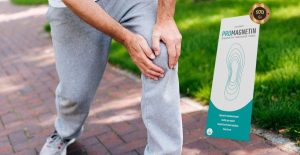As you already know, vitamins can be divided according to their structure — and the basic division takes into account the presence (or absence) of nitrogen in the structure. However, this is not the only division of vitamins! And there are at least two other ways in which this important group is divided in practice.
Breakdown vitamins
Vitamins are divided according to their solubility, something that each of us learned about in elementary school:
- water-soluble vitamins (B vitamins and vitamin C)
- fat-soluble vitamins (vitamins A, D, E and K)
A less official, but very interesting and practical division of vitamins is also the one that says which vitamins can be synthesized inside the human body and which cannot. So, while vitamin C, for example, is not produced in our body, vitamin D and vitamin A can be produced from precursors (cholesterol and carotenoids, respectively), vitamin PP can be produced from one of the amino acids (tryptophan), and vitamin K and some B vitamins are produced by bacteria living in our large intestine [2]. Unfortunately, this does not mean that bacteria provide us with a constant supply of all the vitamins they produce. Why? For example, vitamin B12 is absorbed in the ileum and cannot be absorbed in the large intestine, where our microbiota produces it. But there is also good news – because there is no such problem with absorption, for example in the case of vitamin K, and bacterial synthesis provides us with about 50% of the daily requirement for this vitamin [2, 6].
You can find the individual water- and fat-soluble vitamins, as well as their sources, below – read on and these compounds will have no secrets from you!
Fat-soluble vitamins
It’s time for the key of the program, i.e. an overview of individual vitamins and their functions! First up are fat-soluble vitamins, that is:
- Vitamin A (m.in. retinol, retinal, retinoic acid and some carotenoids)
You already know that vitamin A is a group of compounds and that in the body it can be produced from certain carotenoids. The functions of vitamin A relate to the proper development and differentiation of epithelial tissue (skin and mucous membranes) and bone tissue, and are also related to reproduction – m.in. to the production of sperm. Vitamin A is also important in the synthesis of certain hormones, melanin, collagen and nerve cell sheaths. Retinal is also crucial in the process of vision, while carotenoids are powerful antioxidant and anti-inflammatory compounds. And here’s an interesting fact – although there are about 500 different carotenoids in nature, only about 50 of them can be converted into vitamin A. However, this does not mean that the others are useless — quite the opposite! An example is lycopene, which is not a precursor to vitamin A, but has strong antioxidant and anticancer properties. The most well-known symptom of vitamin A deficiency is night blindness — a decrease in vision in low light.
- Vitamin D (ergocalciferol – D2, cholecalciferol / 25-hydroxycholecalciferol – D3)
Vitamin is one of the most “fashionable” vitamins of recent times. This is due to the fact that more and more discoveries have been made about its properties, especially those related to gene modulation, metabolism and the functioning of the immune system. Studies show that vitamin D is important in the prevention of diseases such as autoimmune diseases and depression – so its fame is well deserved. As always, though, moderation is important — and supplementing your horse’s (literally) doses of vitamin D can do more harm than good. In addition to gene modulation and immunity, the primary function of vitamin D is of course related to its effect on calcium absorption and normal bone structure, and its deficiencies are associated with rickets (in children) and osteomalacia and osteoporosis (in adults). Vitamin D can be produced in the skin, and cholesterol and sunlight are necessary for its synthesis. The metabolically active form of vitamin D (calcitriol) must additionally undergo two processes called hydroxylation (one in the liver and one in the kidneys).
- Vitamin E (some tocopherols and tocotrienols)
The primary function of vitamin E is to help protect the body from oxidative stress. It is also an important component of cell membranes, involved in the protection of red blood cells from breakdown, the transmission of nerve signals, muscle function and sperm production.
- Vitamin K (phylloquinone – K1, menaquinone – K2)
Vitamin K is an essential component of the blood clotting process — it is involved in the synthesis of prothrombin, as well as several other clotting factors. Vitamin K is also important in the proper structure of bones – it is involved in the production of protein, osteocalcin, which is responsible for proper bone mineralization. Vitamin K deficiency can sometimes occur in newborns, so newborn babies are given a protective dose of vitamin K. A synthetic form of vitamin K is known as menadione (vitamin K3).
Water-soluble vitamins
Now that you’re familiar with fat-soluble vitamins, it’s time for a much broader group — water-soluble vitamins.
- Vitamin C (ascorbic acid)
If there was a contest on the popularity of vitamins (and their supplements), as well as the amount of “magical” properties attributed to them , vitamin D and vitamin C would be in the first place. But first things first. Vitamin C has several basic tasks in the body: first of all, it is a powerful antioxidant, thanks to which it protects the body from oxidative stress (together with vitamin E and carotenoids). In addition, it is involved in wound healing, collagen synthesis, adrenal hormones and neurotransmitters, metabolism and detoxification. It is also important in the process of iron and calcium absorption, as well as in the metabolism of folic acid. Vitamin C deficiency is the cause of scurvy (also known as rot), a disease that plagued seafarers who spent months at sea without access to fresh fruit and vegetables.
- Vitamin B1 (thiamine)
Thiamine, discovered by Kazimierz Funk, is necessary for metabolic transformations and obtaining energy from carbohydrates. It is also important in the proper functioning of the nervous system, and beriberi, which is a consequence of its deficiency, manifests itself in disorders of the brain (and circulatory system).
- Vitamin B2 (riboflavin)
Like vitamin B1, vitamin B2 is also involved in metabolic processes and energy metabolism. It is also needed for the transformation of other vitamins into various active forms, it also has an impact on the condition of the skin, eyes, as well as the nervous and immune systems. Vitamin B2 is sometimes used to dye foods yellow.
- Vitamin B3 / PP (niacin)
Vitamin B3, more commonly referred to as vitamin PP, is a term for nicotinic acid and its derivatives. In the body, they play an important role in the processes of protein, fat and carbohydrate metabolism, as well as in the proper functioning of the nervous and digestive systems. Vitamin PP is also needed for the production of certain hormones, m.in insulin, thyroxine, cortisol and estrogen.
- Vitamin B5 (pantothenic acid)
Pantothenic acid is one of the lesser-known B vitamins — but that doesn’t mean it’s unimportant for your health. Vitamin B5 is involved in the metabolism of proteins, fats and carbohydrates, as well as in the synthesis of various types of fatty compounds (m.in. cholesterol, fatty acids, steroid hormones), as well as in the production of antibodies. It is also important for proper hair pigmentation and skin regeneration.
- Vitamin B6 (pyridoxine)
Vitamin B6 is mainly known for its key effects on protein metabolism, but it is also important in the metabolism of carbohydrates and fats, the formation of red blood cells and some neurotransmitters (m.in. serotonin).
- Vitamin B7/H (biotin)
Vitamin B7, also sometimes known as vitamin H, is the main ingredient in supplements for healthy hair and nails — and in fact, biotin has an impact on skin health (and hair and nails are products of the epidermis). Like other B vitamins, biotin is also involved in the metabolism of energy-providing macronutrients and is also a component of some enzymes.
- Vitamin B9 / B11 (folic acid)
Folic acid is a vitamin mainly associated with diet during pregnancy – and no wonder, because its supplementation prevents some fetal malformations. Folic acid plays a key role in the process of DNA synthesis and is also necessary for the proper production of red blood cells and the conversion of harmful homocysteine into the sulfur amino acid methionine. Folic acid deficiency can lead to so-called megaloblastic anemia.
- Vitamin B12 (cobalamin)
Vitamin B12 is an extraordinary vitamin that has a cobalt atom in its structure. It is involved in DNA synthesis, the formation of red blood cells and the metabolism of homocysteine. It is also necessary for the production of serotonin and the metabolism of proteins, fats and carbohydrates. Its deficiency can lead to megaloblastic anemia (just like folic acid deficiency). It is found only in animal products, so people who follow a vegan diet must additionally supplement this vitamin (and include fortified products in their menu).
At this point, you’re probably thinking: wait a minute, that’s it? What about missing B vitamins? Where have vitamins B4, B8, and B10 gone? This is not a mistake – these vitamins do exist, but they are compounds with less proven effects, usually not included in nutrition standards. Vitamin B4 is called choline, which is a component of cell membranes, as well as a substrate for the production of compounds that are intercellular messengers. Choline also plays an important role in brain function — specifically, memory function. Vitamin B8 is, according to some sources, inositol — although other sources say that vitamin B8 is actually another name for biotin (vitamin B7). Vitamin B10, on the other hand, is sometimes referred to as a compound known as p-aminobenzoic acid, but it is a relatively poorly understood acid that is important for the gut microbiota (and not directly for the human body).

